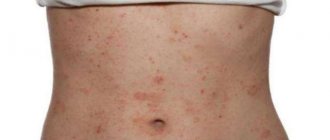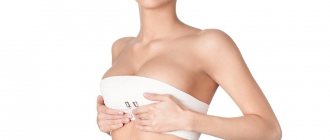After childbirth, today more and more women use special orthopedic products to ease the first weeks, and then quickly return to their previous shape. How to properly put on a bandage after childbirth? What models can be found on sale, and can a doctor prohibit the wearing of this accessory? We will answer all these questions, and at the same time find out how long you can walk in a bandage.
How to put on a bandage after childbirth

If a woman used a bandage during pregnancy, then she probably knows how to properly put on a postpartum bandage. For those who have decided to resort to its help for the first time, we suggest that you familiarize yourself with the basic rules:
- The bandage should be put on while lying down (especially at first), and it is necessary to wait some time for the internal organs to take an optimal position;
- in the future, with significant progress (no threat of complications, rapid healing of sutures and if there is no pain in the lower abdomen and lower back), the belt can be fastened while standing;
- it is important to correctly adjust the tension force so that the bandage does not overly tighten the internal organs and interfere with blood flow, so while still lying down, check how tightly the bandage is tightened (your palm should fit between it and your skin);
- Before putting on the bandage, relax as much as possible and take a few deep breaths and exhale.
Gynecologists cannot come to a consensus on whether a bandage is needed at all after childbirth. As practice shows, it becomes indispensable for postpartum complications, for example, with the threat of uterine prolapse, or after a cesarean section. Although in the latter case there are a number of contraindications, wearing a bandage helps the postoperative sutures heal faster, pain is reduced, blood supply improves, and the muscles become more toned.
When can you wear a bandage?
Information You can put on a postpartum bandage with the consent of your doctor almost immediately after spontaneous childbirth. After a caesarean section, it will relieve pain in the suture area and distribute the load evenly, which will prevent its possible divergence. But you can also use it only after examination by a doctor and his recommendation.
This is due to the fact that there are a number of contraindications:
- some types of sutures after cesarean section and other abdominal operations;
- diseases of the gastrointestinal tract with disruption of normal peristalsis and a tendency to bloating;
- kidney disease with edema;
- allergic and infectious skin lesions.
What types of bandages are there?
The Russian market offers a large selection of models for women who have given birth.
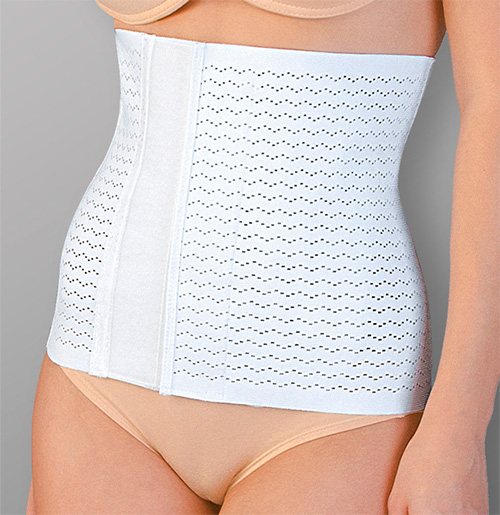
In the first weeks after childbirth, it is considered one of the most popular models. The belt, 15 to 30 cm wide, is made from breathable and environmentally friendly fabrics.
- allows you to quickly tighten the abdominal muscles and abdominal skin;
- effectively supports the spine in the presence of semi-rigid bones on the back;
- easily adjusted to fit using Velcro and additional side fasteners;
- easy to put on and take off both immediately after childbirth and later;
- high hygiene, as it is worn on cotton underwear;
- affordable price;
- large model range.
- the underwires are visible under tight-fitting clothes, and so is the belt itself;
- during active movements, it often slides onto the back;
- does not correct figure flaws.
The second most popular model, which is a high-waisted underwear with tight inserts in the abdominal area, a good example is the Bliss bandage. Sometimes the grace bandage is complemented by additional fasteners in the front, on the gusset or on the sides.
- well corrects the parameters of the waist, hips, buttocks, abdomen;
- looks elegant and invisible under clothes of any style;
- huge assortment;
- wide price range: from budget options to premium products;
- does not slip if chosen correctly.
- low level of hygiene, as it is worn on a naked body;
- difficult to put on in the first weeks after birth;
- if special fasteners are not provided at the bottom, it is inconvenient when visiting the toilet or during an examination by a gynecologist;
- If the size is chosen incorrectly, then it will not be possible to adjust the model.
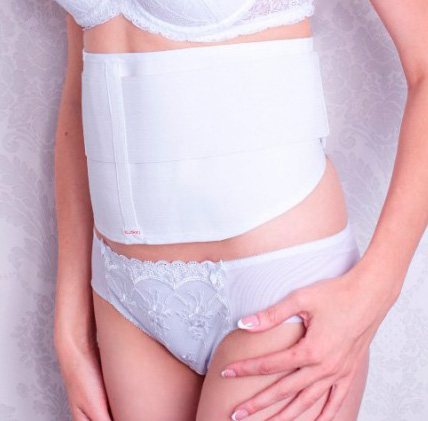
A special belt that begins to be worn during pregnancy. After childbirth, he is simply turned over to the other side, and he is again ready to provide all possible assistance in restoring the female body.
- cost savings: no need to buy two bandages;
- effectively copes with the assigned tasks: the high back tightens the stomach, and the low back supports the spine, relieving the lower back;
- high level of hygiene;
- The cost is slightly higher than that of a standard postpartum bandage, but still the universal model will cost less than buying two products.
Types of postpartum bandages
Universal bandage. The most economical, because it is used both prenatal and postnatal. It is an elastic band, one end of which is wide and the other narrow. After childbirth, the wide side supports the stomach, the narrow side is worn on the lower back. Price from 300 to 1000 rubles.
Ribbon - belt. It is a wide, up to 30 cm wide, elastic band with a dense insert in the abdominal area. It covers almost the entire stomach, pulling it tightly. It is fastened with Velcro, the diameter of the bandage can be adjusted. Pros: not very expensive (from 500 to 1000 rubles), tightens the stomach well, fixes the suture well after a cesarean section, and serves as a preventive measure for postoperative hernias. Cons: when worn, it can ride up to the top of the abdomen, creating inconvenience when walking, especially if it is worn under trousers. Popular brands: Fest, Bliss, Chicco.
Bandage - panties (grace). This type of bandage is made in the form of panties. There is a dense insert on the stomach. Many models have multi-level fasteners on the sides that allow you to adjust the tightness of the drawstring. There are models with fasteners at the bottom, they allow you not to remove the bandage while using the toilet. Pros: fits perfectly on the body, does not ride up, does not slip, perfectly tightens the stomach. Allows you to wear tight-fitting clothes, as it is practically invisible. Cons: Requires daily washing.
There are also corset briefs (with a high waist) and Bermuda shorts (with an extended hip line). Their advantages: in addition to the abdomen, the waist and hips are tightened, the appearance of cellulite and stretch marks are removed, the figure acquires beautiful proportional outlines. The disadvantage is the same as that of grace panties: daily washing. Prices from 600 to 3000 rub.
Bandage - skirt . It is a wide elastic band with a Velcro fastener. Dressed in the form of a skirt, covering the waist and hips, tightening them well.
See photo: types of postpartum bandages
universal bandage ribbon belt panties grace bandage skirt
How and how long to wear a bandage
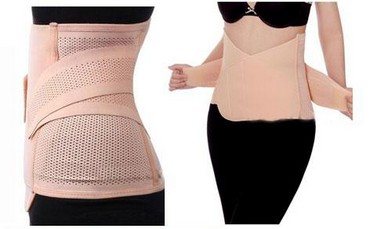
Don't get carried away with wearing a bandage. Constantly helping the body can lead to the fact that your muscles and spine do not want to work on their own. You can return to the orthopedic accessory throughout the day, but wear it for no more than 3-4 hours, taking at least one-hour breaks.
In the future, you can use the bandage during physical activity - housework, long walks, shopping, travel. In this case, it will perform a preventive and aesthetic function - reduce the load on the spine and correct the contours of the body, slightly reducing the waist, hips and making the stomach flatter.
The bandage after a caesarean section should be removed every 3 hours. During a 15-20-minute break, it is necessary to assess the condition of the sutures, and at the slightest suspicion of deterioration, the use of the orthopedic product should be immediately abandoned. It can be used only after repeated consultation with a doctor.
Selection rules
To get the desired results, when choosing a model you need to follow certain recommendations:
- First of all, you should know the size. An incorrectly selected product will cause discomfort or will not give the desired effect. Sometimes the bandages put too much pressure on the body or are too loose.
- The bandage should not cause discomfort. It should not peek out from under clothes, and Velcro should not cause inconvenience.
- It is best to give preference to a bandage made of fabrics that allow air to pass through or absorb moisture. These include lycra or microfiber.
- Pay attention to the fasteners. It is important that they provide the ability to adjust the level of compression. These can be Velcro or hooks. Inconvenient placement of fasteners will cause them to damage skin or things.
- All models have certain advantages and disadvantages. Only the attending physician can choose the best option. You need to select the size and material yourself.
Be sure to read: The effectiveness and dangers of abdominal liposuction
A postpartum bandage should be purchased in special stores or pharmacies. The specialist will advise the type and size of the model.
Purchasing such products on the Internet or from private individuals is prohibited.
Contraindications
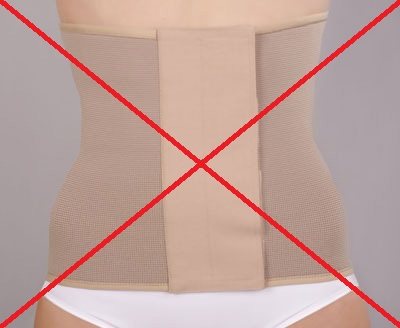
But even if a woman is positive and wants to wear a postpartum bandage, the doctor may impose a ban for several reasons:
- inflammation of sutures;
- flatulence (excessive accumulation of gases in the intestines);
- regular pain in the lower abdomen;
- longitudinal sutures after cesarean section;
- diseases of the gastrointestinal tract;
- renal or cardiovascular failure, accompanied by swelling;
- dermatitis and other skin diseases with foci of inflammation where the corset adheres to the body.
It is necessary to choose a postpartum bandage solely on the recommendation of a gynecologist. At first it is better to use a belt, and then switch to panties. It is important to choose the right size and follow all instructions for wearing the product. Only in this case will it be possible to obtain positive results from the bandage after childbirth.
A protruding belly after childbirth is a common problem among young mothers. The fact is that the growing uterus puts pressure on the abdominal muscles and stretches them. In the first time after childbirth, this cosmetic defect especially worries women. I would like to immediately return my figure to its pre-pregnant state. While sports activities are prohibited, a postpartum bandage will help tone your abdominal muscles. How to choose a bandage after childbirth and how to put it on correctly will be discussed in this article.

How to choose a postpartum bandage?
If you decide to wear a bandage after childbirth, then first you will have to decide on the model. It can be a ribbon, panties, bermuda shorts, grace, a skirt - there is a significant difference between them, although the main function is the same for all: supporting the uterus, strengthening the abdominal muscles and tightening the abdomen. Grace also has a corrective effect on the entire figure - waist, hips, buttocks. Bandage panties are good after a cesarean section because they fix the stitches. And after a natural birth, it is best to opt for a tape: it is very simple and easy to use, besides, the panties and grace tightly cover the perineum, and now it is best to allow air to ventilate here unhindered. Creating a greenhouse effect in the vagina is fraught with postpartum complications and, in principle, is not aesthetically pleasing.
Regarding sizes, they are equal to the sizes of underwear, even if we are talking about a belt or ribbon (S, L, M). But if during pregnancy you have gained more than the permissible norm, then it is better to take a bandage one size larger. Feel free to try on different models when purchasing. Ask a consultant to show you how to put on a particular model correctly. Thus, it is recommended to wear panties after a caesarean section while lying down, but the good thing about the belt is that it can be “attached” while standing. Velcro and stretch tapes allow you to adjust it to your figure almost perfectly!
Make sure that the material adjacent to the body allows air to pass through and absorb moisture (cotton and microfiber are good in this sense). This is especially true in the hot season, but even in winter the skin needs to breathe. Now there are a lot of expensive, beautiful models on sale, but not all of them perform well the main functions of a bandage - look at this first.
In general, it is best to have your doctor advise you on which model to get. The same panties may be contraindicated for certain types of stitches after cesarean section. Ask him when you can start wearing a bandage after childbirth and for how long. Typically, the bandage is put on on the first or next day and used for 4-6 weeks.
Personally, it took me significantly less time to tighten my saggy belly. And it increased significantly throughout the pregnancy. So it makes sense to at least think about it. A bandage after childbirth will not only help you quickly get back into shape and strengthen your abdominal muscles, but will also make caring for your newborn easier, supporting an even weaker uterus, and will also help you avoid fatigue and back pain.
Especially for beremennost.net - Elena Kichak
Who needs a postpartum bandage?
A properly selected bandage helps restore tone to the abdominal muscles and avoid sagging skin in the abdominal area.
The tightening device performs several functions:
- Accelerates uterine contractions after childbirth
- Prevents pelvic organ prolapse
- Strengthens the abdominal muscles
- Tightens the skin in the abdominal area
- Helps get rid of stretch marks
- Reduces back pain resulting from increased stress during pregnancy.
Wearing a bandage after a cesarean section promotes accelerated healing of the postoperative suture. Protects it from mechanical damage and prevents divergence.
Bandage models
There are a huge number of models of slimming products on the market. Modern bandages are made from hypoallergenic materials, they are comfortable to wear and almost invisible under clothing.
- Belt Looks like a wide belt with a dense insert in the abdominal area. Velcro fasteners are adjustable to fit the waist circumference. The belt reliably protects the postoperative suture and secures the abdomen. But the main disadvantage of this model is that it can rise and slide down.
- Panties This type of bandage is worn over underwear. This compression device is comfortable to wear and put on. The high waist is reinforced with thick fabric in the abdominal area. The panties are securely fixed to the body and do not slip. Some models have fasteners on the sides and bottom. When visiting the toilet, you don’t have to take off your panties, just unfasten them.
- Bermuda shorts The model is similar to jockstraps, but has an elongated hip line. Thanks to this, the slimming effect acts on both the waist and hips. Helps fight cellulite and stretch marks.
- Grace A model in which slimming panties are connected to a corset. The corset line can be long or short.
Classification
Most often, the bandage is put on literally the next day after birth. First, the woman should be examined by a doctor and choose the best option for the product. Today there are many options for such funds.
Bandage belt
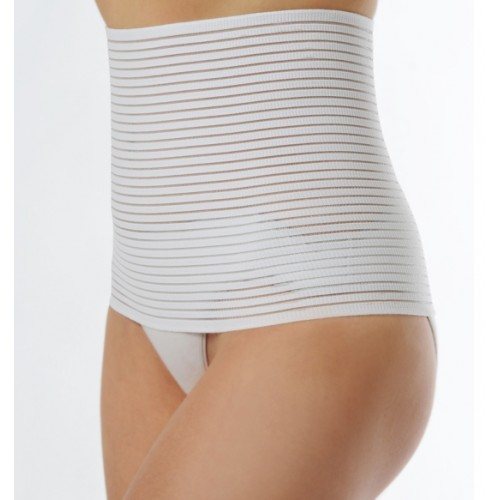
This model is an elastic band that has a fairly impressive width. It affects the abdomen and reaches the thigh area. This bandage is equipped with Velcro fasteners, which are located on the front and sides.
This product has excellent tightening capabilities. However, the model also has certain disadvantages. It often moves or rises upward. Since the belt is a wide synthetic strip, it is not very suitable for summer.
Bandage panties
In appearance, the product resembles a special model of panties that have a high rise. They are distinguished by good slimming properties, high density and have elastic additions in the abdomen and lower back. In addition, the model is complemented by a fairly wide belt.
Be sure to read: The effectiveness of using olive oil for stretch marks during pregnancy

According to numerous reviews, such products are sewn from material that stretches well. Due to this, the product fits perfectly to the female figure. It does not move and is practically invisible from under clothes.
Products that have multi-level Velcro fasteners are highly effective. This allows a woman to adjust the level of tightening. In addition, the options that are equipped with a clasp at the bottom are very convenient. This eliminates the need to remove the device when visiting the toilet.
Bermuda bandage
This option is characterized by a longer thigh area – in some situations it reaches the knees. In addition to abdominal compression, this version of the postpartum bandage eliminates stretch marks. It successfully copes with cellulite, which is often localized on the thighs and buttocks. This allows you to make a woman noticeably slimmer.
To make it easier to use, the bandage is equipped with a fastener on the side - usually in the form of a zipper. Good versions of the product also have a fixation at the bottom.
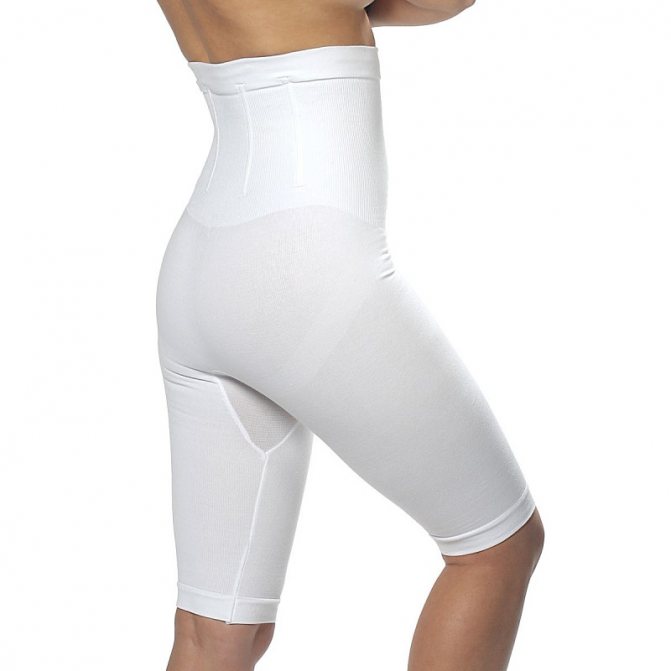
Bandage skirt
This model is a strip of thick fabric, supplemented with Velcro. The bandage should be worn on underwear slightly above the waist. It is important to cover your hips. Such products perfectly tighten these areas of the figure.
Corset panties
They are characterized by a high waistline, bones, and inserts made of dense material. Also, such bandages are complemented with tightening Velcro.
Thanks to the design of the product, it is possible to evenly compress not only the stomach, but also other problem areas. This ensures that you quickly get a perfect figure.
Universal bandage
On the first side the bandage is wide, on the second it is narrow. Thanks to this, it can be used at different periods of time. During pregnancy, the product should be worn with the wide side facing the back, which provides support. The narrow part in this case is located in the abdominal area.
After childbirth, the larger part is used to tighten the abdomen, and the narrower part covers the spine. The key advantage of the model is the financial aspect. Using a bandage eliminates the need for a woman to wear 2 different products.

How to choose and how to put on a bandage
A correctly selected bandage does not restrict movement, does not rub or press. In order to feel comfortable in the purchased bandage, you should carefully consider the choice of bandage.
- Correct size Measure your waist and hips using a measuring tape. Based on this information, determine the appropriate size indicated on the product packaging.
- Natural fabrics The fabric composition of the product may include micro fiber, cotton, elastane. These materials allow the skin to breathe, remove moisture well, and do not cause irritation.
- Multi-level fasteners The bandage should have fasteners that allow you to adjust the degree of tightening of the product.
- Do not use used products Even if the bandage looks like new, this does not mean that its tightening function works 100%. Over time, tissue elasticity may decrease.
How comfortable it will be to wear and how it will cope with its tasks depends on whether the bandage is put on correctly.
You can tighten your stomach after the permission of the obstetrician in the maternity hospital. After a natural birth you should wait 2-3 days, after a cesarean section - at least a week. You need to put on a postpartum bandage while lying down, when your abdominal muscles are relaxed. Lift your buttocks slightly and secure the fasteners. After this, carefully get out of bed and check if your stomach is too tight. There should be no discomfort, pain or unpleasant sensations. You need to tighten your stomach after childbirth for 2 months. During the day, you need to take a half-hour break every 4 hours. The bandage cannot be worn at night.
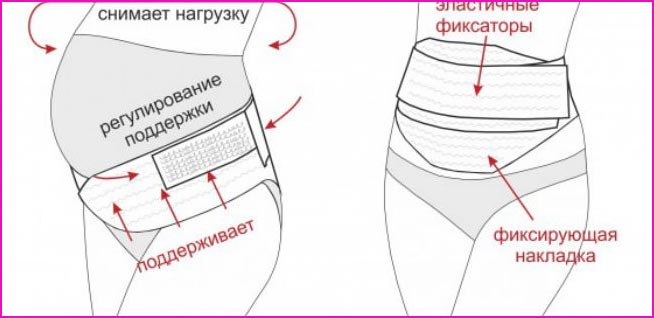
Wearing a bandage every day after childbirth helps tone your abdominal muscles, cope with stretch marks and recover after a cesarean section. However, its effectiveness depends on the correct size, model and compliance with wearing rules.
During the 9 months of pregnancy, a woman’s body undergoes great changes. Therefore, after childbirth it is very important to restore your usual shape. One of the effective means designed to help a woman with this is a special tightening bandage prescribed after childbirth. This is an effective orthopedic product that will be very useful for the expectant mother. However, for this you need to know for what indications and for how long to wear a bandage after childbirth and how to put this product on correctly.
Review of famous models
You can find many effective devices on sale that allow you to achieve good results.
FEST
Such products have different types and high tightening capabilities. They perfectly support the abdominal muscles and have excellent body contouring. Thanks to this, organ prolapse can be avoided. Products from this brand are made of breathable fabric and are complemented with a comfortable clasp.
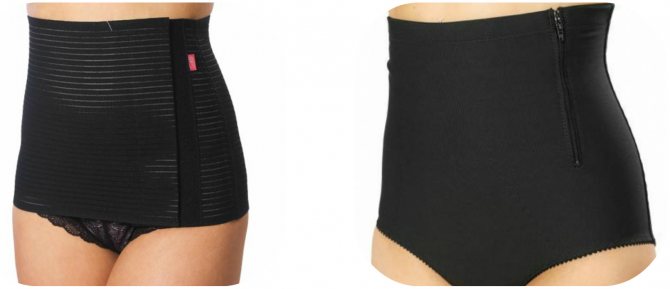
Be sure to read: Losing weight with soda
Mom comfort
These devices are highly elastic. They are required to restore normal tissue tone and evenly distribute the load on the back and organs. The products are designed so that women can wear them after a caesarean section. That’s why they are made from hypoallergenic materials. Postpartum devices are highly breathable.
Bliss
The bandage of this brand has a multi-line structure. This ensures normal air circulation. This has implications for the skin after a caesarean section. There is a cotton lining on the inside. It prevents dermis irritation.
This bandage perfectly fits your figure and helps support it. This is achieved due to the fact that the product follows the anatomical structure of the body.

Chicco
These bandages are made of elastic material and equipped with comfortable fasteners. The products do not have seams, which greatly facilitates the operation of the product. Anatomical bandages quickly restore abdominal tone.
Crait
These products provide moderate tightening and support the abdominal muscles. With their help, it is possible to restore the tone of the buttock muscles. They are made of perforated tape that allows air to pass through. They provide amazing comfort when in contact with the skin.
Trives
The product is made from knitwear and a special mesh. Thanks to this structure, bandages from this brand do not cause irritation. They are complemented by a comfortable fixation system and provide an excellent supporting effect.
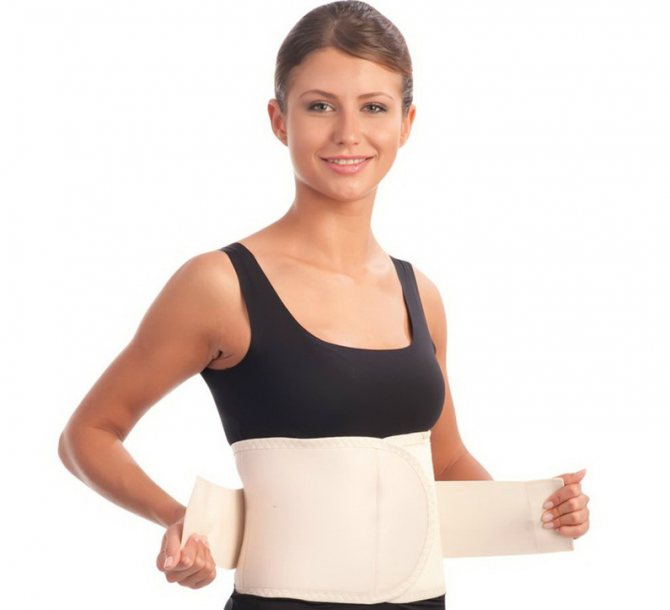
Anita
These are amazingly lightweight products that are incredibly soft. They provide excellent support to muscle tissues and organs and accelerate their recovery.
Tapes with a compression effect help eliminate stress from the back and produce an excellent supporting and tightening effect.
Orlette
Postpartum products from this brand are actively used after natural childbirth and surgery. They prevent uterine prolapse and help cope with stretch marks. The fabric is wear-resistant. Due to this, the bandage is worn for an impressive period of time.
Emma Jean
Such bandages do not peek out from under clothing. Their edges do not roll down due to special processing. An excellent selection of sizes allows you to choose a product for any body type. Comfort clasps provide varying levels of tightening.
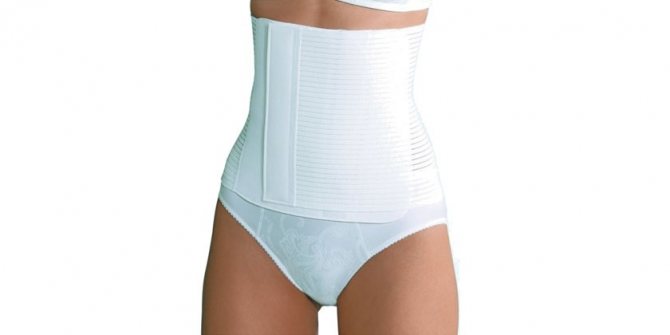
Fosta
The brand produces simple and very comfortable to use models. These postpartum bandages provide excellent support for muscle tissue and help distribute stress evenly. They are made from latex and polyester.
Indications for use
During and immediately after pregnancy, women are often recommended to wear special orthopedic products. But all of them are prescribed strictly in the presence of certain indications.
The main indications for the use of postpartum bandages are:
- caesarean section - the bandage significantly alleviates the condition and accelerates the healing of postoperative sutures;
- pathological childbirth;
- multiple pregnancy;
- the presence of postpartum hernias;
- scoliosis, radiculitis and other back problems, which often worsen after childbirth;
- weakened uterine tone.
There are also certain contraindications for which doctors do not recommend wearing a bandage. The first of these are the seams in the perineal area. Wearing a compression belt leads to some disruption of blood circulation in this area, which can lead to longer healing of the stitches and even to their inflammation. The product is also contraindicated for swelling that develops against the background of diseases of the gastrointestinal tract, kidneys and other health problems. Sometimes an allergy to the materials of the product may occur.
A postpartum bandage is a popular means of restoring a toned shape after the birth of a child.
The tightening product helps to quickly restore uterine tone, prevents prolapse of internal organs, and helps reduce discomfort in the lower back.
However, in some cases, doctors do not recommend a bandage after childbirth. We will consider the main nuances of purchasing and using a tightening product within the framework of this article.
What is a postpartum bandage?
For a certain period of time after childbirth, the uterus remains enlarged. It may take a long time to restore the structure of this organ. A postpartum bandage will help speed this up.
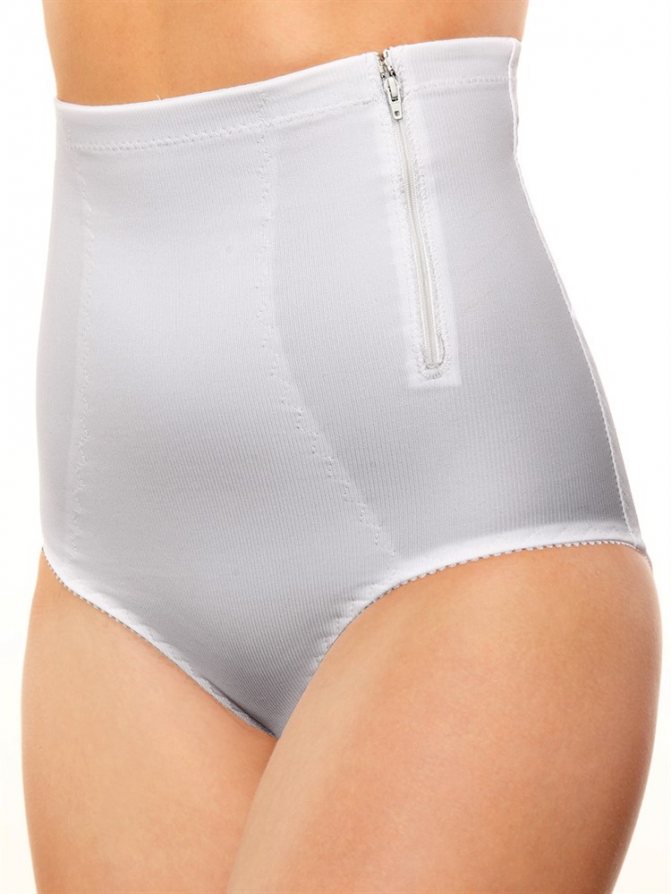
This device ensures contraction of the uterus, prevents prolapse of the abdominal organs, supports the abdominal muscle tissue and helps restore the dermis. In addition, the product restores body shape and accelerates weight loss. The bandage returns the natural location of the organs and provides fixation of the kidney area.
This bandage is prescribed after natural childbirth. In addition, it is often used after surgical delivery. In the second case, the product additionally allows you to fix the seams. This significantly speeds up healing and protects the sutures from mechanical friction.
It is very useful to wear the device if, after surgery, a woman’s lactation is disrupted. The bandage after childbirth stimulates the contractility of the uterus and allows you to establish breastfeeding.
In addition, such products should be used by women who experience disorders in the structure of the spinal column. These include scoliosis, all kinds of deformities, radiculitis, etc. These pathologies often worsen during pregnancy, due to a significant increase in the load on the back. As a result, the woman experiences acute pain, which the bandage helps reduce.
Key indications for the use of postpartum models include the following:
- C-section;
- Difficult childbirth and obstetric pathologies;
- Formation of hernias during childbirth;
- Multiple pregnancy;
- Decreased uterine tone.
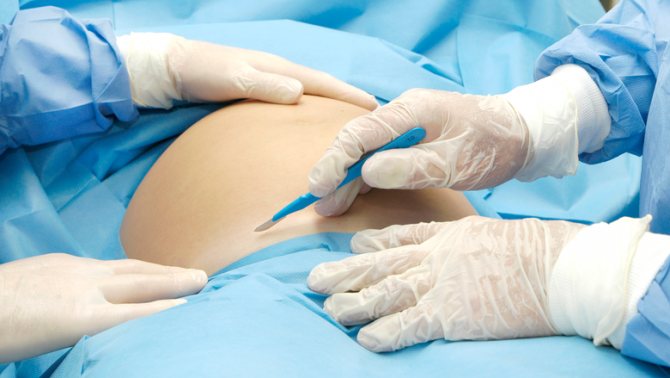
The bandage is prescribed not only after childbirth. It is also actively used during pregnancy. This allows you to strengthen the muscle tissue of the uterus and abs.
Why do you need a universal compression bandage?
This tightening product is suitable for use before and after childbirth. After the baby is born, it contributes to:
- accelerating the recovery of muscle tone;
- reducing the likelihood of developing hernias;
- fixation of sutures after incision of the uterus.
The list of reasons for which a postpartum bandage is needed also includes pain relief, including those associated with a cesarean section. The belt is also indicated for diseases of the skeletal system: osteochondrosis, radiculitis and scoliosis. The belt should be worn if there is excessive sagging skin and muscles, weak muscles, to prevent prolapse of internal organs. Even if these signs are detected, you should not buy a belt yourself.
When considering the topic of whether it is necessary to wear a bandage after childbirth, it is worth considering one more point. Wearing a belt is indicated for women after cesarean section who are experiencing delayed lactation. It is lactation that serves as a natural stimulator of uterine contractions. In its absence, the belt stimulates the muscles and causes them to take their prenatal shape quickly enough.
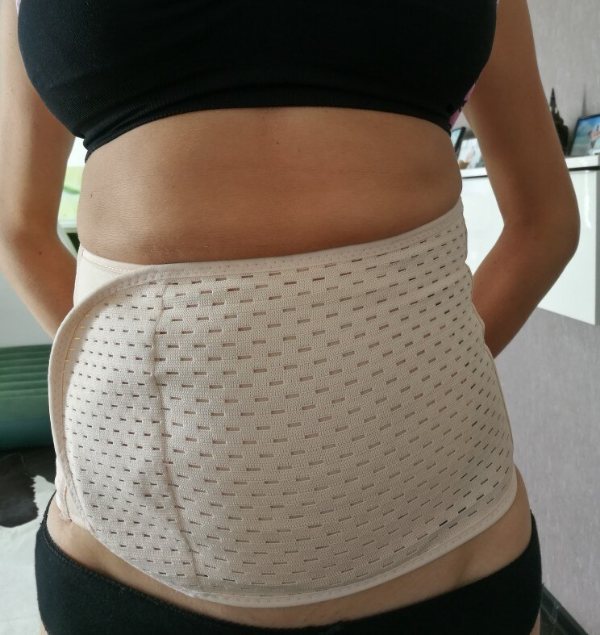
One of the options for a tightening bandage
How to choose
When purchasing, you should not worry about how long to wear the bandage after childbirth, but choose the required size. It depends on how many kilograms a woman has gained during pregnancy and how her volume has changed.
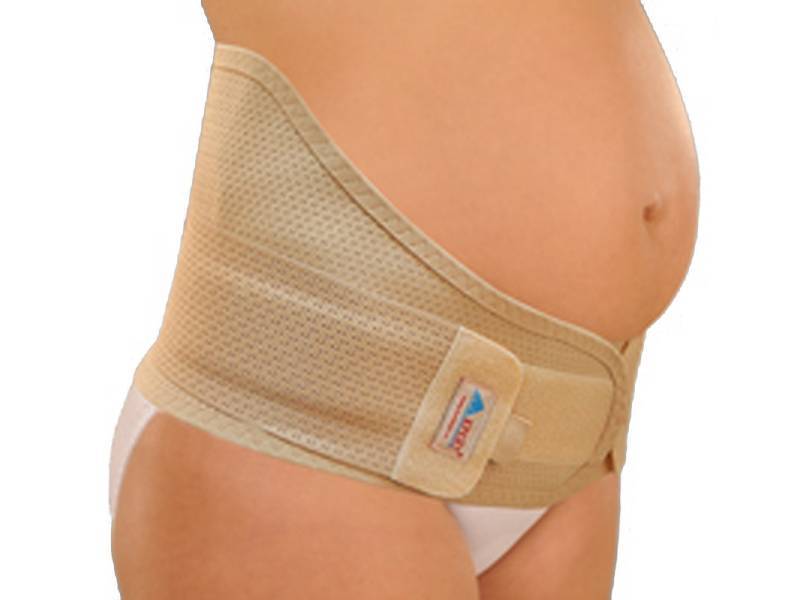
If these indicators have increased slightly, you can buy special knitwear in a regular size. If there is a significant difference in body parameters before and after pregnancy, a belt 1-2 sizes larger is needed.
The model should not only be convenient and comfortable, but also be able to firmly fix the stomach. This area of the product must have a tight insert and multi-level fasteners. It would be better if they were in the form of Velcro or hooks; laces and buttons are inconvenient.
You should choose a product made of microfiber, cotton, or lycra. Cheaper ones made from synthetic materials, in addition to being inconvenient to wear, provoke the appearance of diaper rash and irritation on the skin.
How to wear
The effect of using a tightening product is directly related to correct application. Before putting on a brace after childbirth, it is important to evaluate the clasps and their position. They allow you to adjust the shape of the product and achieve maximum comfort. How to wear a postpartum bandage correctly:
- lie on a horizontal surface, slightly raise your pelvis up;
- carefully put on and fasten the compression product;
- stand up smoothly and make sure you are comfortable.
How to put on a postpartum bandage also depends on the model of the compression device. The nuances of each type of belt are discussed in the table below.
Table 1. How to properly wear postpartum bandages depending on the model
| Variety | Information |
| Universal | After childbirth, the wide side of the belt should fall on the abdominal area, and the low side should support the back |
| Elastic waistband | Should be located strictly in the area from the pelvic bones to the chest |
| Underpants | Before fastening this bandage after childbirth, it is important to wear cotton panties |
How to properly put on a bandage is usually indicated on the packaging for a specific model. It is better to purchase goods at specialized retail outlets.
How to wear a postpartum bandage correctly to remove belly fat
After consulting with a doctor, deciding on a model and choosing a quality product (often expensive), many are faced with the problem of its ineffectiveness. In order not to encounter such a problem after childbirth, it is important to know how to wear a bandage correctly.
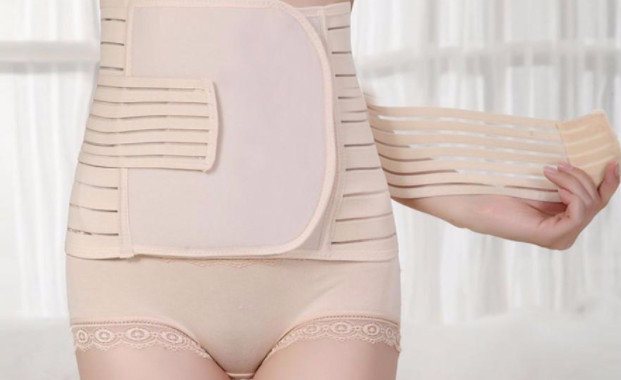
The bandage (depending on the model) is worn on the body or clothing. There is no consensus on this; the main thing is the comfort of the new mother.
How to wear it correctly
Despite the seeming harmlessness of the product, improper use is quite dangerous for a woman. How to wear a postpartum bandage correctly:
- do not put it on immediately after the baby is born;
- do not exceed the permissible wearing time;
- Avoid over-tightening the product.
When a bandage can be worn after childbirth is again decided by a specialist. Please note that the belt must not be used for more than 4 hours in a row and must be removed at night. There should be no feeling of squeezing or tingling when worn.
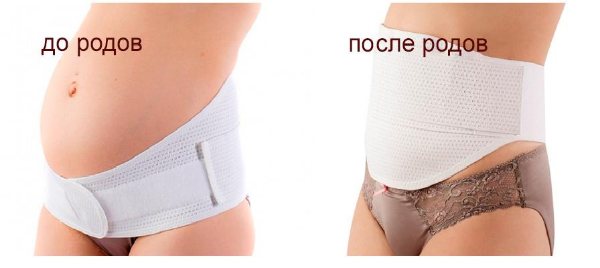
Which one is better to choose?
On the shelves of stores and pharmacies you can find many models of shapewear. Before choosing a postpartum bandage, it is worth familiarizing yourself with the main characteristics of the various types.
Table 2. Which bandage is better to buy
| Model | pros | Minuses |
| Belt | Easy to put on and take off, easy to adjust, can be purchased inexpensively | The belt often moves out, which causes some inconvenience |
| Models with panties or shorts | They tone not only the abdominal area, but also help cope with cellulite. Excellent figure modeling under clothes | When considering which postpartum bandage is best to choose, you need to take into account the high price of this model. In addition, the product cannot be worn a couple of days after birth due to discharge and the need to wear a pad. It is difficult to walk in this model in hot weather |
| Panties with corset | Comfortable model that tightens several areas at once | Make sure that the product is equipped with a clasp at the bottom. Otherwise it will be difficult to go to the restroom |
Many people are concerned about how to choose a product by size. This problem can be avoided by purchasing a universal model. It easily changes shapes with the help of numerous loops and hooks.








